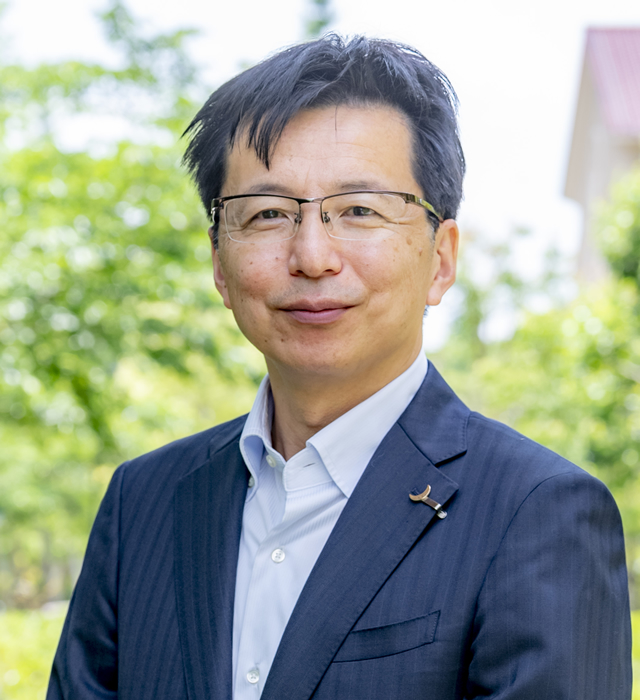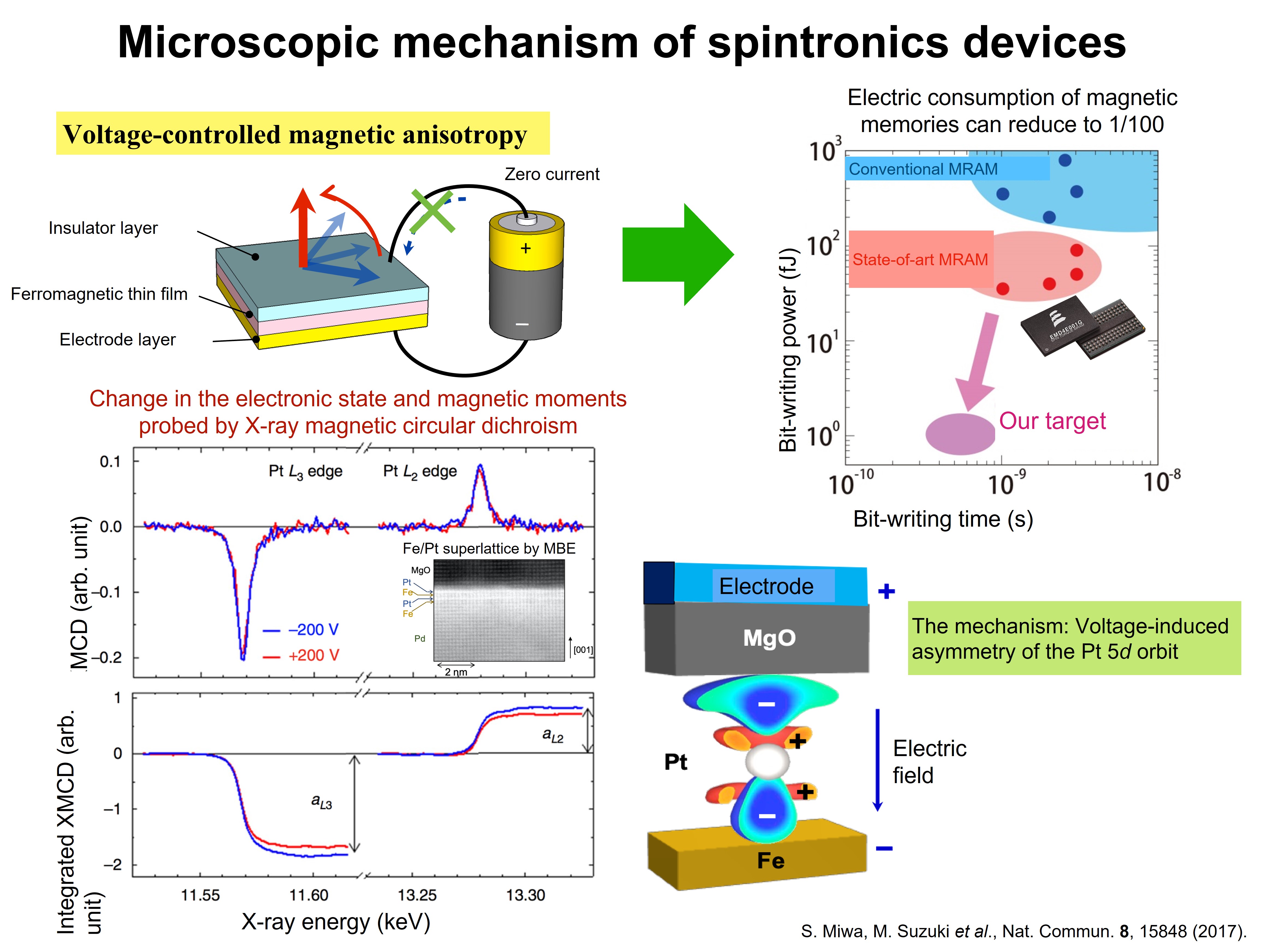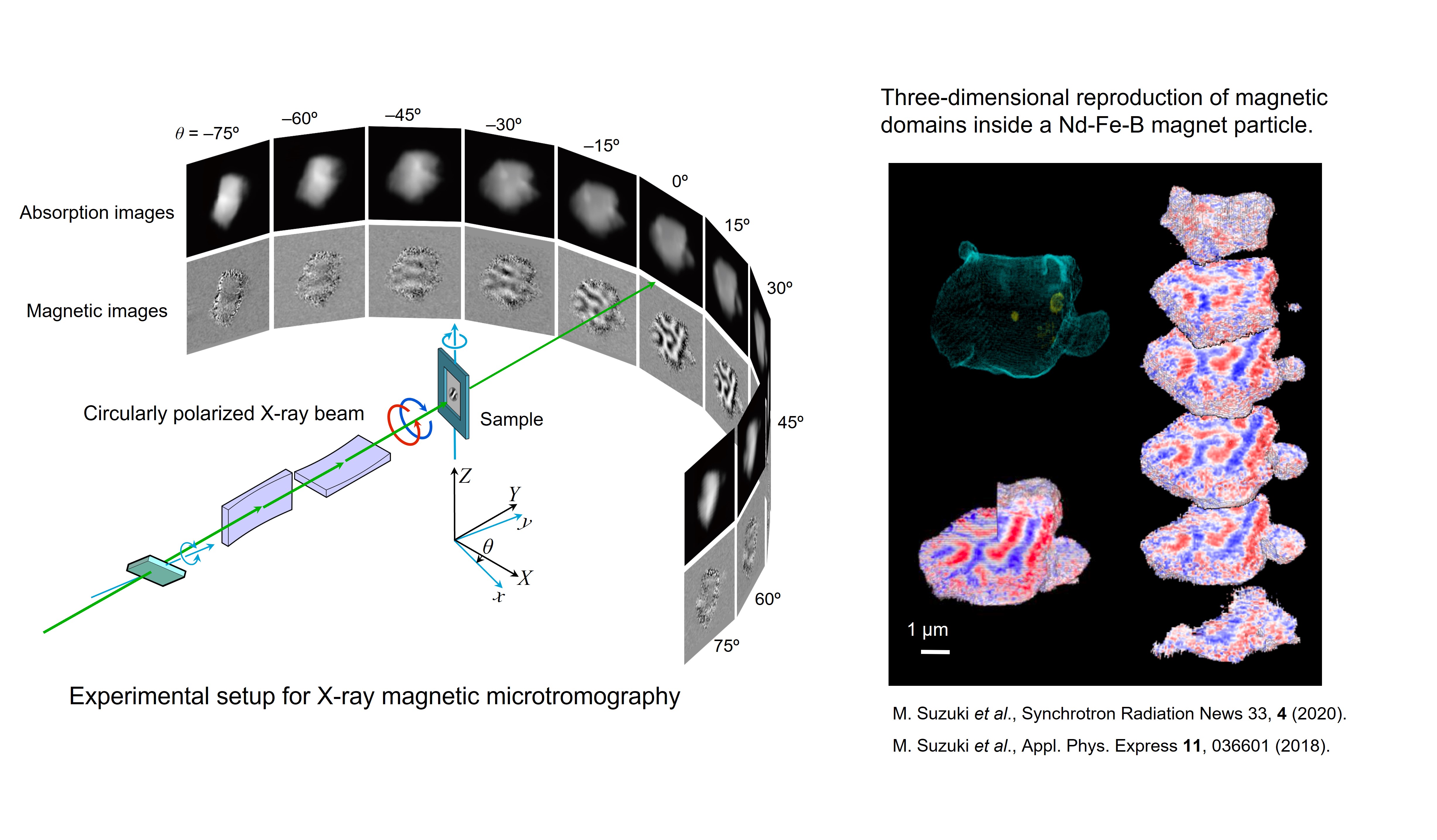Professor introduction
Professor Motohiro SUZUKI
 Motohiro Suzuki was born in Aichi prefecture in 1968. He majored in physics in the doctoral course at Tokyo University of Science, left the course after earning credits in 1997, and received his degree of D. Sc. from The University of Tokyo in 2004. He was a postdoctoral researcher at RIKEN (1997–1998), and a researcher (1998–2006) and a senior researcher (2006–2020) at JASRI. From 2021 he is a Professor in Program of Materials Science, School of Engineering in Kwansei Gakuin University. He is studying functional magnetic materials by X-ray spectroscopy using synchrotron radiation. He is also developing the advanced X-ray techniques including three-dimensional X-ray magnetic microscopy and ultrafast time-resolved magnetometry using an X-ray free electron laser.
Motohiro Suzuki was born in Aichi prefecture in 1968. He majored in physics in the doctoral course at Tokyo University of Science, left the course after earning credits in 1997, and received his degree of D. Sc. from The University of Tokyo in 2004. He was a postdoctoral researcher at RIKEN (1997–1998), and a researcher (1998–2006) and a senior researcher (2006–2020) at JASRI. From 2021 he is a Professor in Program of Materials Science, School of Engineering in Kwansei Gakuin University. He is studying functional magnetic materials by X-ray spectroscopy using synchrotron radiation. He is also developing the advanced X-ray techniques including three-dimensional X-ray magnetic microscopy and ultrafast time-resolved magnetometry using an X-ray free electron laser.
Synchrotron X-ray analysis of functional magnetic materials
We are conducting magnetic spectroscopic analysis of spintronic materials and permanent magnets using synchrotron radiation at SPring-8. Noble metals such as Pt play an important role in the spintronics devices, and we are experimentally exploring the microscopic mechanism of noble metal nanomagnetism. We are also focusing on the development of experimental techniques using circularly polarized and nano-focused X-ray beams. Our recent studies include the visualization of three-dimensional magnetic domains by X-ray tomography and the study of ultrafast magnetization dynamics in the femtosecond region using X-ray free electron lasers.
Curriculum
- Overview of materials science
- Physical Experiments I
- Physical Experiments II
- Advanced Courses of Nanotechnology for Sustainable Energy
KEYWORD
Synchrotron radiation, Spintronics, Permanent magnets, Noble metal magnetism, Nano scale and low dimensions
Theme
Research in details
We study advanced magnetic materials using synchrotron radiation at SPring-8 to elucidate the origin of the unique magnetic properties. Specifically, our research interests include (1) nanoscale magnetic properties of noble metals such as platinum, (2) correlation between three-dimensional magnetic domain structure to the magnetic functions, and (3) ultrafast and element-selective magnetic control using X-ray free electron lasers. The scientific output that will be obtained from these studies will serve as a guideline for the development of new magnetic materials with superior performance, and are expected to contribute to a sustainable society through the application of advanced materials in the future.
List of collaborations
Japan Synchrotron Radiation Research Institute (JASRI), RIKEN RSC, National Institute for Materials Science (NIMS), Kyoto University, The University of Tokyo, Osaka University, Tohoku University, University of Hyogo.

